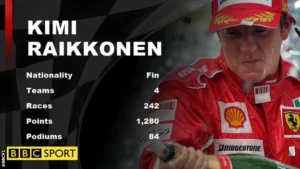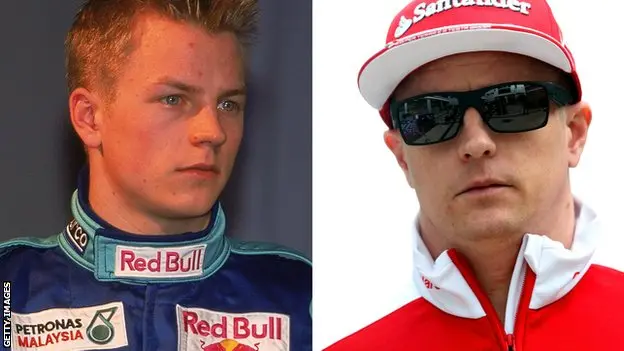
Kimi Räikkönen’s famously stoic demeanor has earned him a unique place in Formula 1 — and a surprisingly long career with Ferrari, despite criticism over his performance.
During the 2016 British Grand Prix weekend, Räikkönen revealed a rare moment of satisfaction: he enjoyed seeing his critics disappointed. Just a day after Ferrari announced he would stay on for 2017, he coolly told reporters, “I wouldn’t be here if I didn’t think I could still drive well… It gives me pleasure to see disappointed people.” The comment was a clear dig at pundits — including BBC’s Allan McNish — who believed the team should move on from the then-36-year-old driver.
Yet despite the doubters, Räikkönen retained his place at Ferrari — a move that left some puzzled, given his track record since rejoining the team in 2014. His first season back saw him heavily outpaced by teammate Fernando Alonso, both in qualifying and race results. The following year, Sebastian Vettel replaced Alonso and again comfortably outperformed the Finn.
However, in 2016, Räikkönen showed signs of a resurgence. With a car more to his liking, the qualifying gap between him and Vettel narrowed significantly, and he was even ahead of his teammate in points at the halfway mark — although this was partly due to Vettel’s mechanical misfortunes.
Räikkönen’s popularity remains remarkably strong, despite — or perhaps because of — his indifferent approach to the sport’s media and public relations demands. From his daring drive from 17th to victory at the 2005 Japanese Grand Prix to his legendary radio message — “Leave me alone, I know what I’m doing” — Räikkönen has cultivated an image as the ultimate anti-hero of F1.
But has his talent faded? Statistically, his performance since winning the 2007 title has declined. He was overshadowed by teammate Felipe Massa between 2008 and 2009 and was even let go by Ferrari to make room for Alonso. When he returned years later, the dynamic hadn’t changed much — he consistently played second fiddle to Vettel.
His supporters argue that Räikkönen’s performance is highly dependent on car characteristics, especially front-end grip and predictability. Critics counter that adaptability is a core requirement for any top-tier driver.

So why did Ferrari keep him on? It turns out, Räikkönen’s lack of drama and compatibility with Vettel played a significant role. The team considered other options — including Sergio Perez, Valtteri Bottas, Carlos Sainz, and Red Bull stars Daniel Ricciardo and Max Verstappen — but most were unavailable or considered too risky. Vettel reportedly lobbied hard to keep Räikkönen, citing their low-conflict working relationship and similar driving preferences.
Ferrari, struggling to close the gap to Mercedes, likely valued stability and harmony over a shake-up. Räikkönen might not be the fastest on the grid anymore, but he’s reliable, drama-free, and keeps Vettel sharp without threatening team unity.
As Vettel put it: “He is a world champion for a reason. He could have been a multiple world champion if McLaren had given him a better car. He’s one of the best drivers we have, no doubt.
Ultimately, Räikkönen remains the ideal teammate — quick enough to justify his seat, but unlikely to destabilize the internal hierarchy. In a team still struggling to mount a title challenge, Ferrari decided to avoid unnecessary complications.
And so, with a shrug, a “bwoah,” and likely a few more terse radio messages, the Iceman stayed — proving that in F1, being the least complicated option can be the most valuable one.










